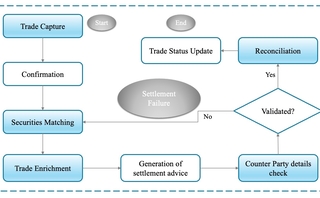SGX’s new FX platform sees increased NDF trading from US firms
Sef exemption opens door to increased US buy-side interest

Singapore Exchange (SGX) has seen increasing activity from US buy-side firms trading non-deliverable forwards (NDFs) with local regional banks on its new anonymous foreign exchange platform, as it looks to establish the platform as a primary venue for the region.
CurrencyNode, the electronic communications network (ECN) launched in September last year within Singapore’s SG1 data center, received an exemption from the US Commodity Futures Trading Commission (CFTC)’s Swap Execution Facility (Sef) registration requirements in October, allowing US firms to trade NDFs on the venue with Asia-Pacific (Apac) regional banks, without the platform having to register as a Sef.
It has since onboarded nine US buy-side firms trading Asian NDF currency pairs, including Indian rupee, Indonesia rupiah, Korean won, Taiwan dollar and Philippine peso, as well as offshore China renminbi (CNH) deliverable forwards.
Devang Bhatia, chief commercial officer of SGX’s CurrencyNode, explains that the exemption has simplified the way US firms can access local and regional pricing for Apac emerging markets currencies.
“For a global hedge fund to add an Indian or Chinese bank, it takes a lot of documentation and paperwork before both can onboard each other—it’s too much of an effort for just one currency pair,” says Bhatia.
“[This exemption] allows SGX CurrencyNode to match liquidity from Asian market-makers in SG1 with global hedge funds who are trading Asia EM.”
Through SGX’s ownership of the BidFX and MaxxTrader platforms—which many global macro hedge funds and asset managers use to access over-the-counter FX liquidity—it can link up buy-side firms and regional market-makers on its anonymous central limit order book.
Its central prime brokerage model is also utilized to fill the gaps in the origination of Asian currency pricing and distribution from Singapore. Instead of a client appointing a prime broker to bilaterally settle trades on their behalf, a central prime broker acts as a central counterparty and settles both sides of the trade.
Bhatia says this smoothes the onboarding process for market-makers and buy-side firms, and eases the credit challenges clients may face trading NDFs. Deutsche Bank and BNP Paribas are the two central prime brokers, and CurrencyNode now has seven banks onboarded altogether. So far, 65 participants have signed up to CurrencyNode to trade NDFs and spot currencies.
On the spot trading side, Bhatia says around 40% of its flows reference CNH, with US counterparties being among the top traders.
Its liquidity management team has also designed skew-safe liquidity pools where dealers can show an axed price without fear of being picked off by predatory high-frequency trading firms.
“There are challenges around how to give liquidity providers the confidence that the liquidity is going the right way. We’ve spent a lot of time within our liquidity management team working very closely with the liquidity providers to ensure that there is no skew leakage or these are skew-safe prices being shown out to the market,” adds Bhatia.
Bhatia believes CurrencyNode can establish itself as the primary market for Asian emerging market currencies trading, especially since the closure of EBS’s Tokyo-based matching engine last year.
“If I compare it to some of the other global ECNs, we already have 50% of the participant list that they have built over the last 8–10 years. We think in the next three years, we could be the leading benchmark for Asian EM with our SG1 presence,” Bhatia says.
The Monetary Authority of Singapore (MAS) has been determined to create a liquidity pool that can also rival London and New York through an incentive scheme for large FX dealers to set up a pricing engine within the SG1 data center.
Yet dealers have largely been underwhelmed by the lack of activity transacted through their SG1-based matching engines.
In addition, SGX faces new competition from the London Stock Exchange Group’s upcoming launch of NDF Matching, based in Singapore. Some market participants anticipate the NDF matching engine will boost end-client trading and could mean a rise in the use of local spot interdealer venues for banks to hedge their NDF risk.
However, Bhatia says CurrencyNode can be a price discovery venue for global liquidity takers that can trade with onshore market-makers and access local emerging market liquidity which they previously could not.
“A lot of the regional banks in Asia do not have a presence in London or New York, which are the key data centers where electronic price distribution and price discovery happens,” he says. “We think for Asian currencies, we can be that venue where price discovery is being done.”
Further reading
Only users who have a paid subscription or are part of a corporate subscription are able to print or copy content.
To access these options, along with all other subscription benefits, please contact info@waterstechnology.com or view our subscription options here: http://subscriptions.waterstechnology.com/subscribe
You are currently unable to print this content. Please contact info@waterstechnology.com to find out more.
You are currently unable to copy this content. Please contact info@waterstechnology.com to find out more.
Copyright Infopro Digital Limited. All rights reserved.
You may share this content using our article tools. Printing this content is for the sole use of the Authorised User (named subscriber), as outlined in our terms and conditions - https://www.infopro-insight.com/terms-conditions/insight-subscriptions/
If you would like to purchase additional rights please email info@waterstechnology.com
Copyright Infopro Digital Limited. All rights reserved.
You may share this content using our article tools. Copying this content is for the sole use of the Authorised User (named subscriber), as outlined in our terms and conditions - https://www.infopro-insight.com/terms-conditions/insight-subscriptions/
If you would like to purchase additional rights please email info@waterstechnology.com
More on Trading Tech
For MarketAxess, portfolio trading buoys flat revenue in Q3
The vendor is betting on new platforms like X-Pro and Adaptive Auto-X, which helped forge a record quarter for platform usage.
Quants look to language models to predict market impact
Oxford-Man Institute says LLM-type engine that ‘reads’ order-book messages could help improve execution
JP Morgan pulls plug on deep learning model for FX algos
The bank has turned to less complex models that are easier to explain to clients.
Nasdaq says SaaS business now makes up 37% of revenues
The exchange operator’s Q3 earnings bring the Adenza and Verafin acquisitions center stage.
Harnessing generative AI to address security settlement challenges
A new paper from IBM researchers explores settlement challenges and looks at how generative AI can, among other things, identify the underlying cause of an issue and rectify the errors.
The causal AI wave could be the next to hit
As LLMs and generative AI grab headlines, another AI subset is gaining ground—and it might solve what generative AI can’t.
Waters Wrap: Operational efficiency and managed services—a stronger connection
As cloud, AI, open-source, APIs and other technologies evolve, Anthony says the choice to buy or build is rapidly evolving for chief operating officers, too.
BlackRock forecasts return to fixed income amid efforts to electronify market
The world's largest asset manager expects bond markets to make headway once rates settle.







